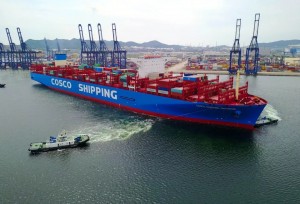Studies show that freight costs account for about 4% of the total cost of photovoltaic modules. On trade routes between the Far East and the west coast of the US, northern Europe and the Mediterranean, freight costs are rising.
According to data released by Xeneta, a Norwegian Marine and freight benchmark platform, spot freight rates for containerized freight have now soared to an all-time high since 2022.
Xeneta noted in the report that the market average spot price from the Far East to the West Coast of the United States will climb to $5,170 per 40GP container equivalent (FEU) on June 1. This is a sharp increase of 57% from May, the highest spot price in 640 days, even surpassing the peak price during the Red Sea crisis earlier this year. Spot freight rates from the Far East to the West Coast of the United States are forecast to peak at $6,250 /FEU in June, slightly lower than the peak of the Red Sea crisis ($6,260 /FEU), but still enough to highlight the current rising shipping costs.
On the Far East to Northern Europe trade route, spot prices are expected to surpass the Red Sea crisis peak and climb to $5,280 /FEU, up from $4,839 /FEU on January 16. That would be the highest level in 596 days and a 63 percent increase since April 29.
Xeneta points out that trade routes from the Far East to the Mediterranean are showing a similar trend. Spot prices for the route are expected to rise slightly from the Red Sea crisis peak of $5,985 /FEU to $6,175 /FEU. The forecast is up 46 percent from May and the highest level in 610 days.
Since freight costs account for about 4% of the total cost of PV panels, an increase in spot prices could have a knock-on effect on PV module prices. The same situation is same as Solar Panel Mount included C channel steel,U channel steel,Z channel steel,Solar Mounting Bracket Profile OM etc.
Xeneta said the global PV market is currently facing multiple challenges, including ongoing conflict in the Red Sea region, severe port congestion, and shippers’ decision to pre-load imported cargoes ahead of the traditional peak season of the third quarter to address potential supply chain tightness. Despite the recent climb in spot rates, Peter Sand, chief economist at Xeneta, said the pace of growth has slowed compared with May, which could signal some easing of the tight supply situation.
“For shippers who have already started shipping goods, even those that have signed long-term contracts only weeks ago, they cannot arrive quickly,” Sand stressed. He further explained that “carriers will give priority to shippers who pay the highest rates, which means that those shippers whose goods are traded at lower long-term contract rates may be stranded at ports.” It happened during the COVID-19 pandemic and it’s happening again.”
Post time: Jun-04-2024
